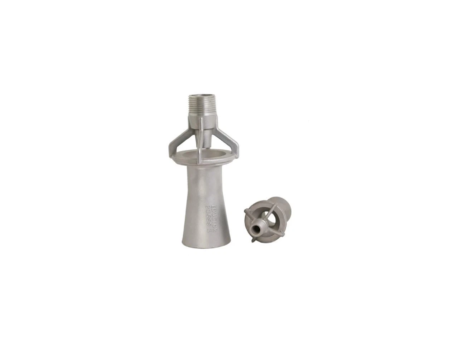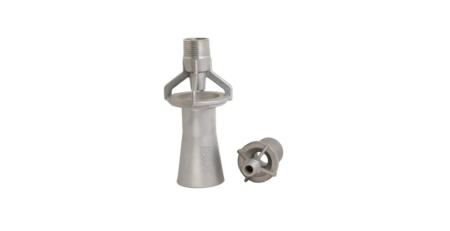With proper tank agitation, industries can achieve optimal product quality, process efficiency, and overall performance
In this post you can learn more aspects of tank agitation and the best ways to successfully maintain your fluid supply
What is Tank Agitation
Tank agitation refers to the process of mixing or stirring the contents of a tank or vessel to ensure uniformity, prevent settling or separation, and facilitate desired chemical reactions or physical processes. Agitation is commonly used in various industries, including chemical processing, pharmaceuticals, water treatment, and food production.

The primary purpose of tank agitation is to achieve mixing and blending of the tank contents. This helps in achieving uniform distribution of components, such as chemicals, additives, or solids, throughout the tank volume. Agitation also helps in preventing settling, stratification, or formation of stagnant zones within the tank, which can affect the overall process efficiency.
There are different methods of tank agitation, and the selection depends on the characteristics of the tank contents, the desired mixing intensity, and the process requirements. Some common agitation methods include:
- Mechanical Agitation: This involves the use of mechanical devices, such as impellers, propellers, or turbines, which are mounted inside the tank. These devices create rotational or linear motion to induce fluid movement and promote mixing.
- Air or Gas Agitation: Air or gas can be injected into the tank using spargers or diffusers. The bubbling or entrainment of air/gas creates turbulence, which facilitates mixing and agitation.
- Recirculation: In some cases, the tank contents are pumped out of the tank and then reintroduced through a spray nozzle otherwise known as an Eductor. This recirculation creates flow and agitation within the tank.
Several factors influence the effectiveness of tank agitation
- The rotational speed or flow rate of the agitator or pump affects the intensity of agitation. Higher speeds or flow rates generate more turbulence and mixing.
- The design of the agitator, including the type and size of impellers, affects the flow pattern and mixing efficiency. Different designs are suitable for specific applications and tank geometries.
- The shape and size of the tank can impact the agitation process. Tank geometry may require specific agitator configurations or additional baffles to optimize mixing.
When performing tank agitation, it is important to consider safety aspects, such as the potential for splashing or release of hazardous substances. Adequate personal protective equipment (PPE) and safety measures should be implemented, and operators should be trained on proper handling and operation.
Agitation processes can be monitored and controlled using various techniques, such as flow meters, pressure sensors, temperature sensors, and level indicators. Automated systems can be employed to maintain desired agitation parameters and adjust them as needed.
It is essential to consider the specific requirements of your application and consult with experts or professionals in the field to determine the most suitable agitation method, equipment, and parameters for your tank mixing needs.
The importance of tank agitation
Tank agitation plays a crucial role in various industries and processes due to its significant importance. Here are some key reasons why tank agitation is important:
Tank agitation ensures thorough mixing and homogenization of the tank contents. It prevents settling, separation, or stratification of components, such as solids, liquids, or chemicals, within the tank. This uniform mixing is vital for achieving consistent product quality and desired process outcomes.
In many chemical processes, tank agitation is essential for promoting and enhancing chemical reactions. Agitation helps in bringing reactants into contact with each other, increasing the reaction rate, and ensuring uniform distribution of heat or mass transfer. This is crucial for achieving desired reaction kinetics and product yields.
Agitation is particularly important when dealing with suspensions or slurries containing solid particles. It prevents solids from settling at the bottom of the tank, maintaining suspension and avoiding blockages or clogging in pipes, pumps, or equipment downstream. Effective solids suspension ensures continuous processing and prevents uneven distribution or loss of valuable materials.
Agitation facilitates heat transfer within the tank. It helps distribute heat uniformly, preventing localized hot or cold spots. Effective heat transfer is crucial in processes such as heating, cooling, or maintaining a specific temperature range for optimal process conditions.
In processes involving dissolution or mass transfer, such as dissolving solids into liquids or mixing gases into liquids, agitation plays a vital role. It increases the surface area of contact between the phases, enhancing mass transfer rates and ensuring efficient dissolution or extraction.
Agitation helps in preventing the growth of microorganisms, such as bacteria or fungi, in tanks or vessels. By continuously mixing the tank contents, it discourages the formation of stagnant zones where microorganisms can proliferate. This is crucial in industries such as food and beverage, pharmaceuticals, and water treatment.
Proper tank agitation contributes to consistent product quality and characteristics. It ensures that all components are uniformly distributed and that the desired physical or chemical attributes are maintained throughout the process. This is crucial for achieving reproducibility and meeting product specifications.
Tank agitation improves overall process efficiency by reducing processing time, optimizing resource utilization, and minimizing waste or rework. It facilitates faster mixing, reaction, or dissolution rates, resulting in increased throughput and productivity.
Effective tank agitation helps prevent issues such as sediment buildup, scaling, or fouling on tank walls or equipment surfaces. By keeping the tank contents in motion, it reduces the accumulation of deposits, which can negatively impact equipment performance and require frequent maintenance or cleaning.
Overall, tank agitation is of paramount importance in ensuring product quality, process efficiency, and the successful operation of various industries and processes. It promotes mixing, uniformity, and desired chemical reactions, ultimately leading to improved productivity and consistent results.
If you tank agitation system fails
If tank agitation fails or is ineffective, several issues and consequences can arise depending on the specific application and the contents of the tank.
Without proper agitation, the contents of the tank may not be adequately mixed or blended. This can result in uneven distribution of components, leading to variations in product quality or inconsistent process outcomes. Incomplete mixing can also lead to localized concentrations of chemicals, resulting in ineffective treatment or processing.
In tanks containing solids or suspensions, the lack of agitation can cause settling or stratification. Solid particles may settle at the bottom of the tank, resulting in uneven distribution or blockages in pipes, pumps, or downstream equipment. Stratification of components can lead to inconsistent product quality and difficulties in extracting or separating desired substances.
Agitation is crucial for facilitating chemical reactions by bringing reactants into contact and increasing the reaction rate. If tank agitation fails, the reaction rate may be slowed down, resulting in prolonged processing times or incomplete reactions. This can affect product yields, quality, and overall process efficiency.
Agitation plays a role in distributing heat within the tank, ensuring uniform temperature distribution and efficient heat transfer. When tank agitation fails, localized hot or cold spots may occur, affecting the desired process conditions and compromising heat transfer efficiency. This can result in incomplete heating or cooling processes, extended processing times, or variations in product quality.
Stagnant zones within a tank due to the lack of agitation can create favorable conditions for microbial growth. Microorganisms, such as bacteria or fungi, can proliferate in these stagnant areas, leading to contamination or spoilage of the tank contents. In industries like food and beverage or pharmaceuticals, this can result in compromised product quality, safety concerns, and potential health risks.
Failed tank agitation can lead to process inefficiencies and production delays. Incomplete mixing, settling, or inefficient reactions may require additional processing steps, rework, or adjustments to achieve the desired outcomes. This can result in increased operational costs, decreased productivity, and delays in meeting production targets.
To prevent these issues, regular maintenance, inspection, and monitoring of tank agitation systems are essential. It’s important to ensure that agitators, impellers, or other agitation equipment are properly functioning and optimized for the specific application. Regular testing and validation of mixing performance can help identify and address potential problems before they impact the overall process.



